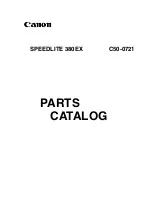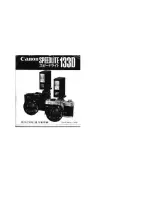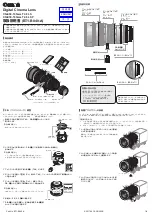
17
17
3.3.7 Back-to-back Strobing: (00 23 00 00 00 03), (00 25)
Two consecutive strobes per one trigger are output with a programmable interval before and after the
CCD transfer gate. Thus two frame images of strobe lightings at very short interval can be captured.
Since this method freezes objects in specific interval or almost simultaneously, the application is effec-
tive for high speed object motion analysis, dual lighting imaging (i.e. front-lit/back-lit, two color LED
strobes, visible and IR lighting, etc.). By analyzing the two frames, it can find the particle trajectory, ac-
curate motion speed, different angle views, different material properties, etc.
This mode is only applied to the Full Scan Mode and the programmable interval (00 25) is within the
one frame period. (It can be longer as custom option such as two frames or 100ms apart).
The interval programming is;
= Number of (n - 2) x 1H (horizontal clock)
For 1 ms interval for SXGA, the command is;
57 00 25 00 00 00 1B
( n-2 = 1000/40.55 = 25 , n = 27 = 1B hex).
To be precise, this gives 1.01375 ms of interval.
The minimum interval is 00 00 00 04.
This mode is only effective in the dark environment
and strobe lights are only the light source.
3.3.8 Multiple Frame Capture (ITS Mode), Bracketing Exposure: (00 23, 00 00 00 04)
This is similar to multiple-shot photography with different exposures to bracket the lighting conditions.
This is a good tool for ITS license plate reading, high security identifications of critical object imaging.
The number of frames being captured are programmable as well as each exposure time.
(Example; three shots per trigger with 1/250, 1/500, 1/1000s and use the best image among three)
The number of frames per trigger is programmed with (00 29) register. Currently you can choose one,
two or three frames. (00 00 00 00, -02, -03 respectively). The exposure is (00 24) for the first frame,
(00 27) for the second frame and (00 28) for the third frame.
3.3.9
Auto-iris Lens Application Mode
When an auto-iris lens is required for continuous imaging such as for the surveillance application, the
normal mode operation is suggested. However, in async image capture such as for ITS application,
the analog output portion of a camera needs continuous video output for the auto-iris lens drive. In ITS
Mode,
GP-series
generate continuous video so that a auto-iris lens can be used in the async image
capture with the electronic shutter. The Auto-iris lens model with the connector is optional.
For the signal output, see Table 2 in next page.
3.4 Advanced Camera Functions (Hardware Description)
A
GigE camera is powerful and it serves as a local server in a network. Besides common I/Os such as
external trigger input and strobe signal output, it provides additional port controls.
The
GP-series
can handle RS-485 Serial Interface, CAN (optional), Opto-isolated I/Os, Digital Audio
Input and Output, and Temperature Sensor.
3.4.1 RS-485 Interface
3.4.1.1 RS-485
Customers can send own RS-485 serial control protocol via Ethernet. Industrial RS-485, PROFI-bus,
surveillance pan-and-tilt / zoom lens control protocol, lane control signals are a few examples. A CAN
device can be also used for industrial serial control. In camera control (Port control), RS-485 is using
Port #1. (Port 0 is used for camera control). These serial communications are transparent between PC
and camera GPIO outputs. This application is simply using an Ethernet cable to handle user’s serial
communications besides image transfer so that there is no specific protocol provided as part of SDK.
See Port Control section 4.4.3.
GEViCAM Inc
Fig. 22
Summary of Contents for GP-151400
Page 39: ...39 39 GEViCAM Inc MEMO ...
















































